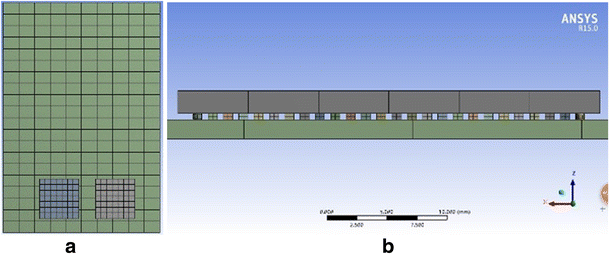
Fatigue Life Prediction for PBGA under Random Vibration Using Updated Finite Element Models
- Post by: Tobias Larsson
- 6th October 2016
- No Comment
ABSTRACT
A procedure based on finite element (FE) modeling, response surface-based model updating and random vibration analysis is presented to predict the fatigue life of plastic ball grid array (PBGA) components mounted on daisy chain printed circuit board (PCB). A specially designed fixture is used to mimic the typical boundary condition of plug-in PCBs. The FE model is updated through three consecutive stages. In each stage, the first three resonant frequencies are calculated using ANSYS and correlated with modal test results. Two objective functions are created using resonant frequencies and minimized using a multi-objective genetic algorithm (MOGA). The results show that commercial FE software can be used to improve the accuracy of the FE model in a practical way. Random vibration analysis is performed and good agreement with test result is obtained. The resistance of the specially designed daisy chain PCB is monitored. A two-parameter Weibull distribution is used to fit the PBGA failure time. The Von Mises stress power spectral density (PSD) of the critical solder joints is calculated in ANSYS and transferred into time-history data. The rainflow cycle counting (RFCC), the SâN curve and the Minerâs rule are used to estimate the cumulative damage. The calculated fatigue life agrees well with the test results.
KEYWORDS
Ball grid arrays, Chains; Electronics packaging, Fatigue damage, Fatigue of materials, Forecasting, Genetic algorithms, Modal analysis, Natural frequencies, Power spectral density, Printed circuit boards, Soldered joints, Spectral density, Surface properties, Vibration analysis, Weibull distribution, Fatigue life prediction, Model updating, PBGA, Random vibrations, Response surface, Finite element method
CITATION
Xu, F., Li, C., Jiang, T. et al., Fatigue Life Prediction for PBGA under Random Vibration Using Updated Finite Element Models, Exp Tech (2016) 40: 1421. DOI: 10.1007/s40799-016-0141-6
DOWNLOAD
http://urn.kb.se/resolve?urn=urn:nbn:se:bth-13079
